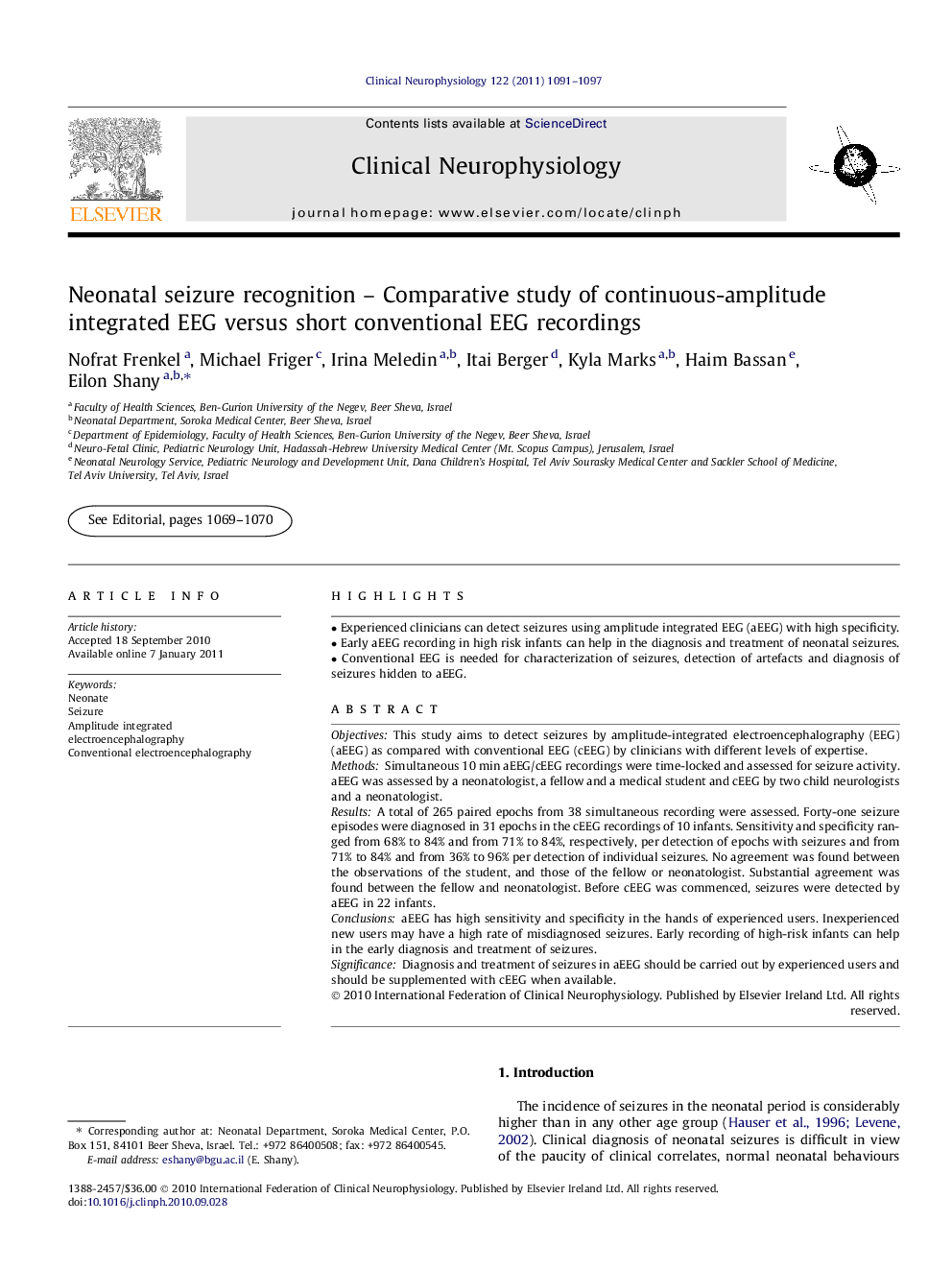| Article ID | Journal | Published Year | Pages | File Type |
|---|---|---|---|---|
| 3044290 | Clinical Neurophysiology | 2011 | 7 Pages |
ObjectivesThis study aims to detect seizures by amplitude-integrated electroencephalography (EEG) (aEEG) as compared with conventional EEG (cEEG) by clinicians with different levels of expertise.MethodsSimultaneous 10 min aEEG/cEEG recordings were time-locked and assessed for seizure activity. aEEG was assessed by a neonatologist, a fellow and a medical student and cEEG by two child neurologists and a neonatologist.ResultsA total of 265 paired epochs from 38 simultaneous recording were assessed. Forty-one seizure episodes were diagnosed in 31 epochs in the cEEG recordings of 10 infants. Sensitivity and specificity ranged from 68% to 84% and from 71% to 84%, respectively, per detection of epochs with seizures and from 71% to 84% and from 36% to 96% per detection of individual seizures. No agreement was found between the observations of the student, and those of the fellow or neonatologist. Substantial agreement was found between the fellow and neonatologist. Before cEEG was commenced, seizures were detected by aEEG in 22 infants.ConclusionsaEEG has high sensitivity and specificity in the hands of experienced users. Inexperienced new users may have a high rate of misdiagnosed seizures. Early recording of high-risk infants can help in the early diagnosis and treatment of seizures.SignificanceDiagnosis and treatment of seizures in aEEG should be carried out by experienced users and should be supplemented with cEEG when available.
Research highlights► Experienced clinicians can detect seizures using amplitude integrated EEG (aEEG) with high specificity. ► Early aEEG recording in high risk infants can help in the diagnosis and treatment of neonatal seizures. ► Conventional EEG is needed for characterization of seizures, detection of artefacts and diagnosis of seizures hidden to aEEG.
